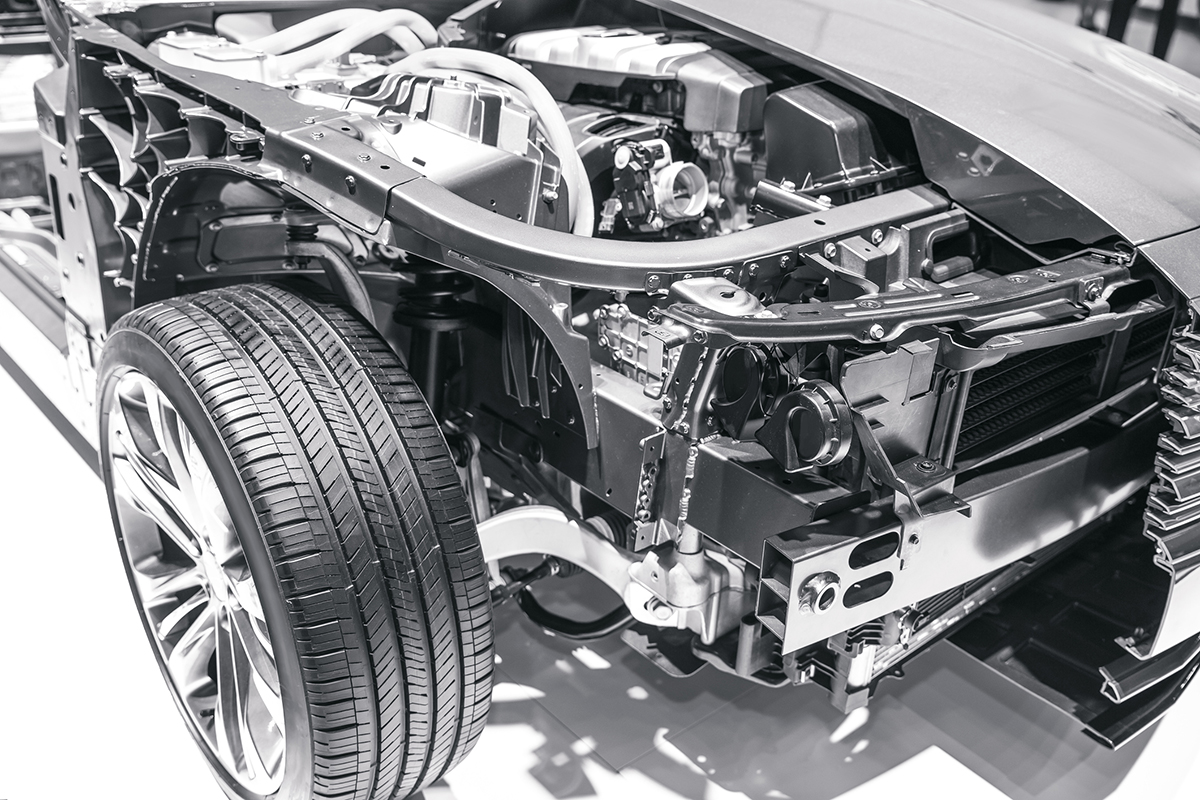Masaru Ogawa, Associate Professor at Kogakuin University, underlines the importance of improving the safety of mechanical products, in particular, the stress states that occur within a structure
Improving the safety of mechanical products subject to fatigue or stress corrosion cracking, such as automobiles, trains, aircraft, and welded pipes in power plants, is essential to ensure the safety of the user. Therefore, it is necessary to discern the fracturing method and develop appropriate countermeasures while designing mechanical structures.
Stress states that occur within the structure
During in-service inspections, it is important to predict the remaining useful life of such products non-destructively, based on the propagation rate of cracks detected. Therefore, it is necessary to understand the stress states that occur within the structure. There exist two types of stress, namely external and internal stress, which is also known as residual stress. External stresses caused by external forces can be calculated on a large scale and in detail owing to recent developments in numerical analysis technology.
However, it is difficult to evaluate three-dimensional residual stresses generated in a structure, even in the absence of external forces. The residual stresses can be calculated qualitatively based on the thermo-elastic-plastic finite element method for design considerations.
However, a quantitative evaluation of individual differences is also essential for challenging cases when temperature-dependent parameters need to be set or when the individual residual stresses vary significantly even with similar manufacturing conditions.
Measurement methods
Various destructive methods, such as the contour method and deep hole drilling method, have been established and have successfully evaluated the residual stress at the measured location with high accuracy. However, destructive methods can only be applied to sampling inspections. Neutron diffraction makes it possible to measure three-dimensional residual stresses nondestructively; however, only discrete points can be measured via this technique. Korsunsky et al. established an eigenstrain reconstruction method to estimate the residual stress distributions over an entire structure using discrete point measurements (1).
However, the neutron diffraction method can only be used in special irradiation facilities. Therefore, we are currently working with Prof Korsunsky’s group to estimate three-dimensional residual stresses using the eigenstrain methodology and X-ray diffraction instead of neutron diffraction (2). Portable X-ray diffractometers can be used in on-site measurement techniques. Using this technique, a large number of points can be measured in a relatively short time using a diffractometer with an automatic measurement system.
What causes residual stresses?
Residual stresses are caused by the uneven distribution of inelastic strains; in contrast, if the inelastic strains occur uniformly, no residual stress is generated. The inelastic strain that causes residual stresses is called the eigenstrain. In the eigenstrain theory, three-dimensional eigenstrains that reproduce the elastic strains and residual stresses are estimated using inverse analysis. The three-dimensional residual stress distributions can be obtained using the finite element model considering the
eigenstrain as the initial strain. This method can be applied if the dimensions, Young’s modulus, and Poisson’s ratio of the structure are known. When three-dimensional eigenstrains are estimated using surface elastic strains measured by X-ray diffraction, the number of unknowns can be relatively larger than the number of measurements.
Closing remarks
It is, therefore, important to reduce the number of unknowns for the eigenstrain appropriately. For example, the relatively higher estimation accuracy of this method can be obtained for relatively uniformly processed materials such as welded, thermal sprayed, heat-treated, and surface-modified materials because an approximate location where inelastic strains occur can be identified. Once the initial residual stresses are known, the stress distribution after crack propagation can be calculated. Therefore, it is possible to calculate the crack growth rate that is necessary for predicting the remaining useful life of products affected by fatigue or stress corrosion cracking.
References
(1) A.M. Korsunsky, A Teaching Essay on Residual Stresses and Eigenstrains, Butterworth-Heinemann (2017) ISBN-10: 0128109904.
(2) M. Ogawa, A.M. Korsunsky, Impact, Vol. 2020, No. 4 (2020), pp. 30-32, DOI: https://doi.org/10.21820/23987073.2020.4.30.
Please note: This is a commercial profile
© 2019. This work is licensed under CC-BY-NC-ND.












